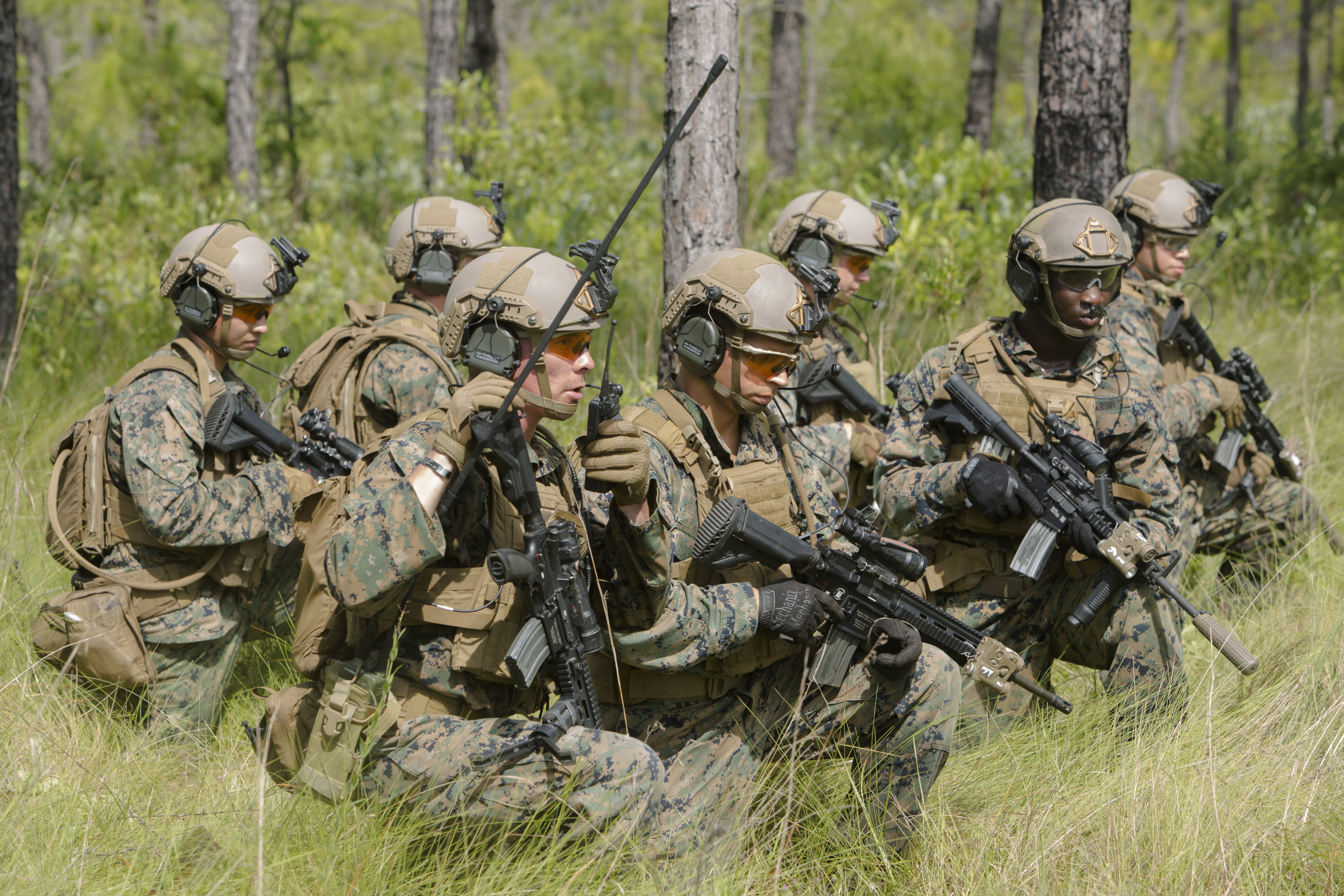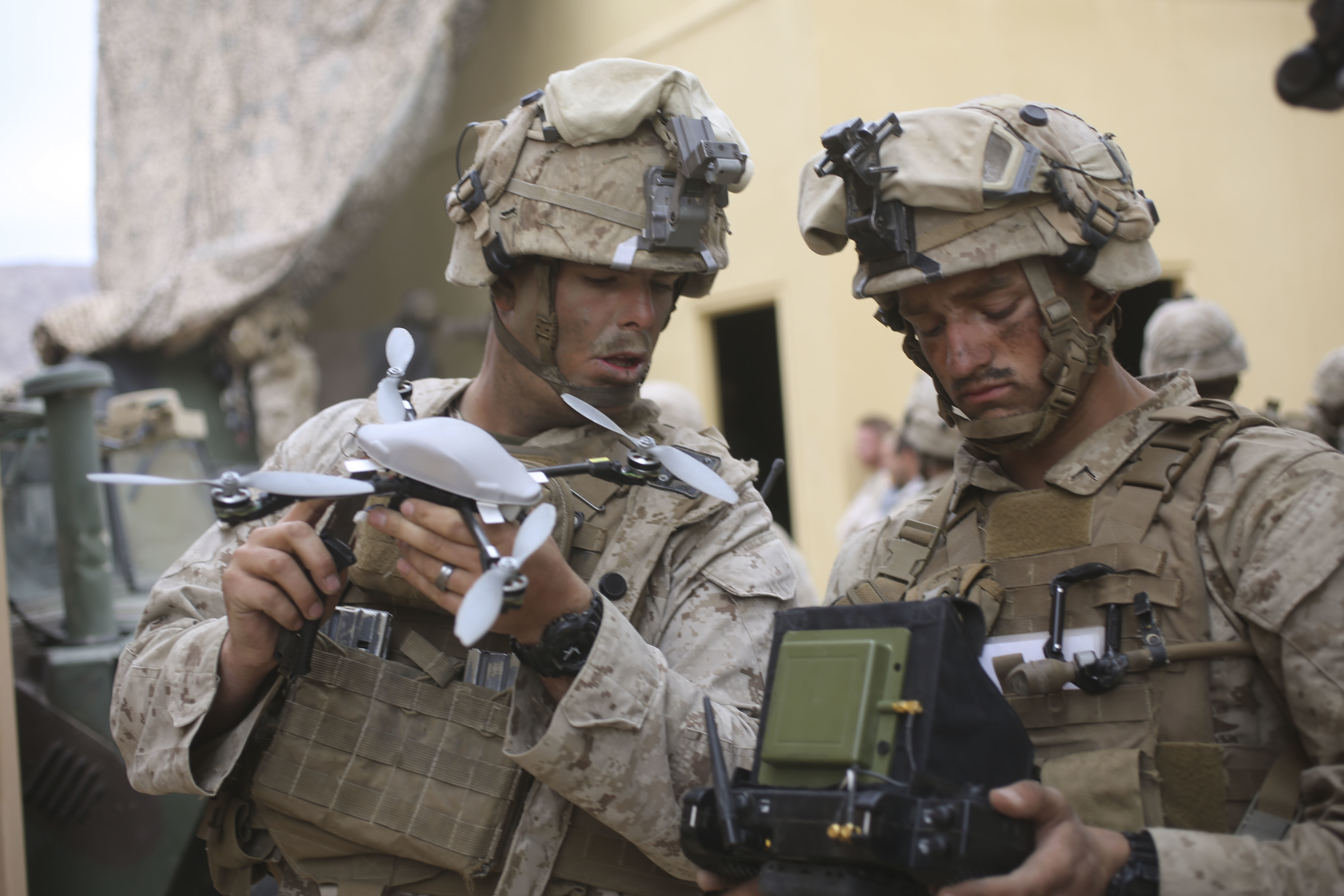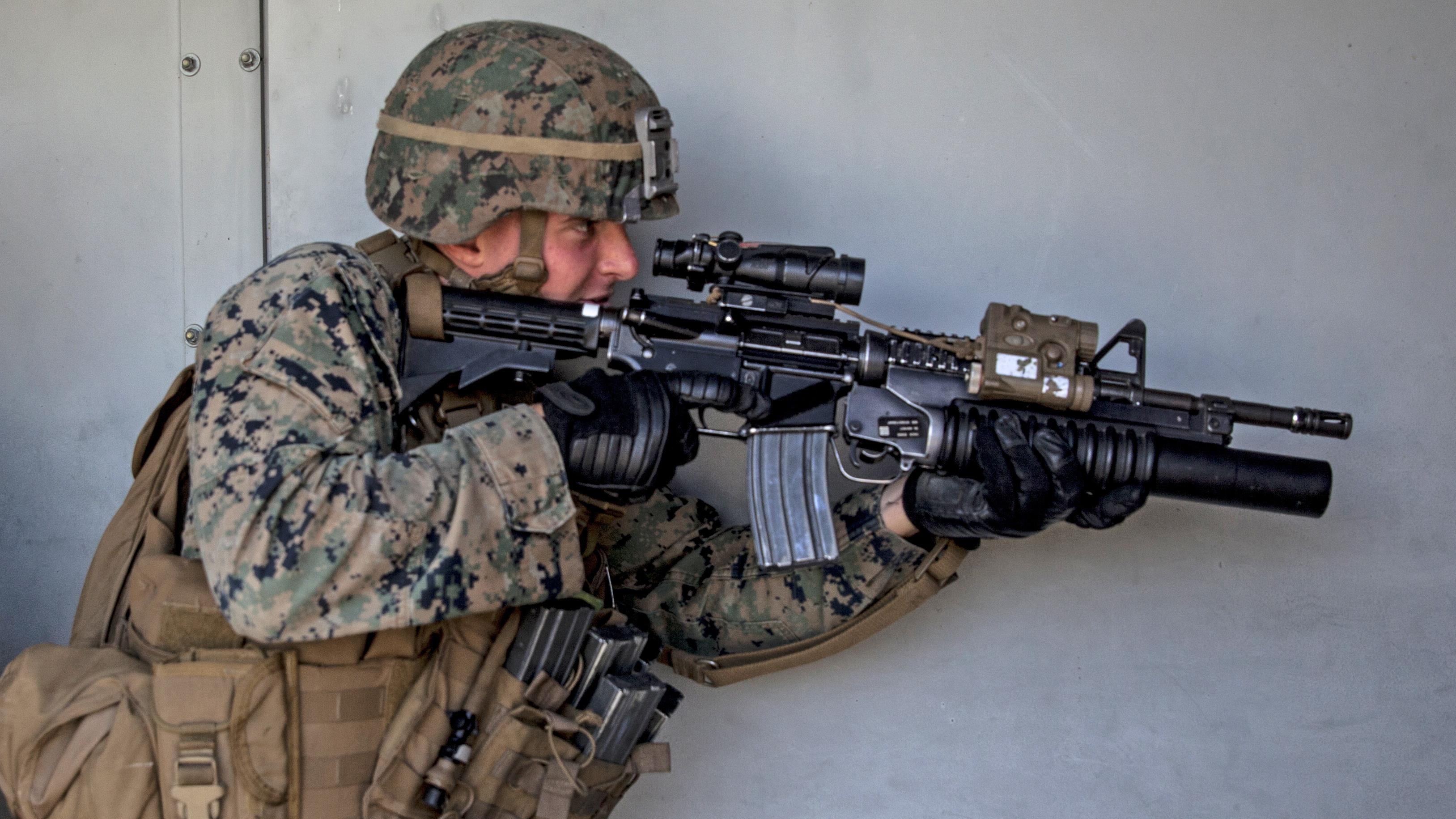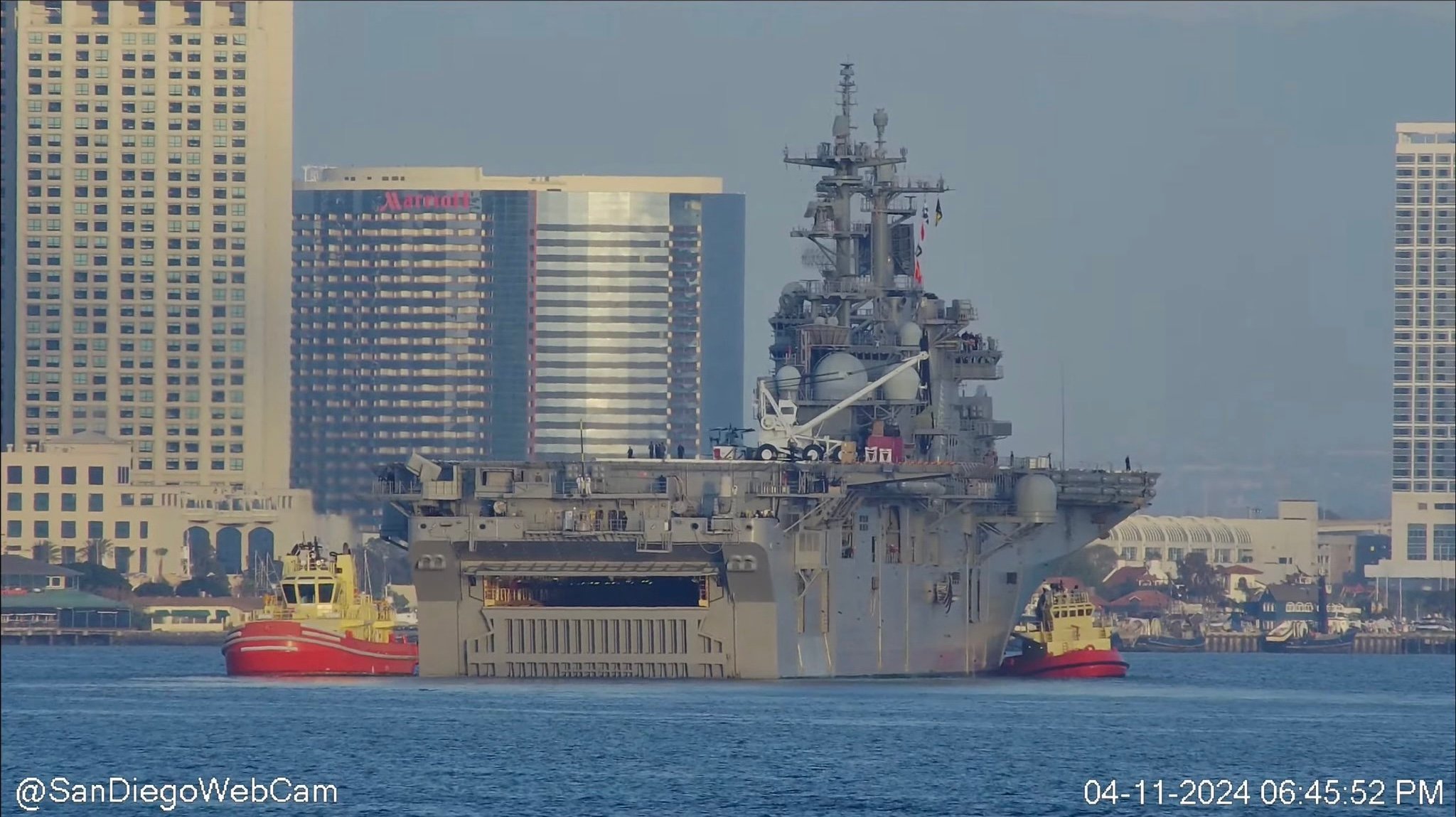
THE PENTAGON – The Marine Corps is beginning to implement changes to the infantry battalion a year into the service’s Sea Dragon 2025 experimentation effort, with recommendations that include fielding small unmanned aerial systems (UAS), adding advanced training opportunities, restructuring the rifle squad and drawing up new tactics and procedures for a high-end battlefield.
Brig. Gen. Christian Wortman, commander of the Marine Corps Warfighting Lab, told reporters today that senior Marine Corps leadership had been briefed on the results of the first year of the Sea Dragon experimentation effort and that Commandant Gen. Robert Neller had already signed off on some changes. Others, including the key question of how many Marines will make up a rifle squad going forward, are still being debated and should be decided on soon.
One item the commandant has approved is the addition of a “unmanned systems and electronic warfare systems operator” at the rifle platoon level “to be able to exploit the capabilities offered by small UASs, to operate those small UASs, be able to receive the data and the imagery coming off of it, and to facilitate the decision-making that was being made by the platoon commander to move with more precision, more lethality and at a higher tempo,” Wortman said. In addition, all the options presented to the commandant for a future rifle squad – including options for an 11-Marine, 12-Marine and 14-Marine squad, compared to today’s 13-Marine setup – include a systems operator to help the squad leader manage the new technology and the information it provides.
The commandant has also approved several new technologies. UASs will be fielded at the rifle squad, rifle platoon and rifle company level, and electronic warfare tools will be fielded at the platoon and company levels – though the specific EW tools are still in development, and the Marines are fielding an interim UAS prototype to squads now while Marine Corps Warfighting Lab officials conduct a broader assessment of available systems to ensure the Marine Corps fields the most useful one.

Though the final details of the EW tools are still undecided, Wortman said that during the year-long experiment the Marines had situational awareness boosters “which are completely new inside the ground combat element: some enhanced communications, more reliable communications, and enhanced situational awareness tools. So rather than using kind of a traditional map and compass and tracking with that, you have the type of situational awareness and visualization tools that we’re accustomed to,” he said, including radios that connect to a tablet with visualization of friendly forces, adversary forces and civilian population locations.
Neller also approved the addition of water purification systems at all levels, and the Marines are making plans to begin using the M27 improved automatic rifle instead of the M4 service rifle, the Carl Gustaf M3 multipurpose anti-armor/anti-personnel weapon system (MAAWS) instead of the traditional Shoulder-Launched Multipurpose Assault Weapon (SMAW) and the M320 grenade launcher instead of the M203.

“In each case we found those systems to be more lethal, to provide greater range, greater killing power, and just a greater range of options for how we might employ that system based off of different combinations of warheads, different types of systems for aiming them, and things of that nature,” Wortman told reporters about the weapons upgrades.
“The commandant is very determined to get after expanded capability, increased lethality as fast as the institution can responsibly move. There’s a lot of urgency to the work, and the commandant is very determined to move quickly.”
Though the new gear will change how the infantry battalion approaches its missions, Wortman made clear that a top lesson learned throughout the first year of the Sea Dragon effort was that the noncommissioned officers and company-level leaders were among the most important assets to leverage and invest in, with one major investment being advanced military occupational specialty training for fire team leaders, squad leaders and others.
“There were significant increases in the capability of each echelon of command inside of that infantry battalion that can be attributed to the equipment we provided them, but it was a common observation that the more powerful tool, or the most powerful tool, was the enhanced capability really derived from that advanced MOS training for our noncommissioned officers,” Wortman said.
“Because of the fact that they had increased access to their advanced MOS training, they achieved a higher level of proficiency quicker at the rifle squad, rifle platoon level, which enabled the company and the battalion to focus on higher-order tasks more quickly. They also identified that the noncommissioned officers that had this advanced MOS training were in a stronger position to incorporate the new technology and the information streams associated with the new technology better.”

During the last year of experimentation, the Marines also realized they would have to rethink airspace deconfliction procedures and other tactics as the Marines put more UASs and different kinds of weapons into the air.
“Now we’re putting all kinds of unmanned aerial vehicles in the air, and those represent a potential risk to our manned assets. So we need to make sure that as squads, platoons and companies are launching UASs in order to heighten their situational awareness, be able to conduct their operations with more precision and be more lethal, we are making adjustments to our techniques and procedures for managing that airspace and deconflicting our manned assets from those unmanned assets,” the general said.
In sum, all these changes create “a whole host of implications in terms of how we conduct our training and education, how we adjust our doctrine and the techniques and procedures for employing these capabilities, how we do our leader development, how we may need to shift or adjust our organizational structure, what types of facilities will be required to accommodate and maintain this equipment. And we’re working our way through implementation for each one of these recommendations across that spectrum of considerations,” Wortman said.
The infantry battalion portion of Sea Dragon has concluded, but this fiscal year the Marines are taking on hybrid logistics with a similar year-long experiment with two logistics battalions from 2nd Marine Logistics Group. The experimentation will include additive manufacturing, unmanned logistics distribution and “sense and respond” logistics. In FY 2019 the service will tackle information environment operations such as electronic warfare, cyber and military deception.
“What Sea Dragon is all about is, this is an enduring and continuous program that we use to study the operating environment, drive the development of technology that’s relevant to our most important capability gaps, develop concepts around that technology, wargame the concepts to refine them, and then ultimately hand it off for live force experimentation; and inside of that live force experimentation that we harvest the lessons learned, the perspectives of the operating forces, and we identify the most promising capabilities that we can get into rapid prototyping and, if appropriate, rapid acquisition,” Wortman said of the experimentation program.





